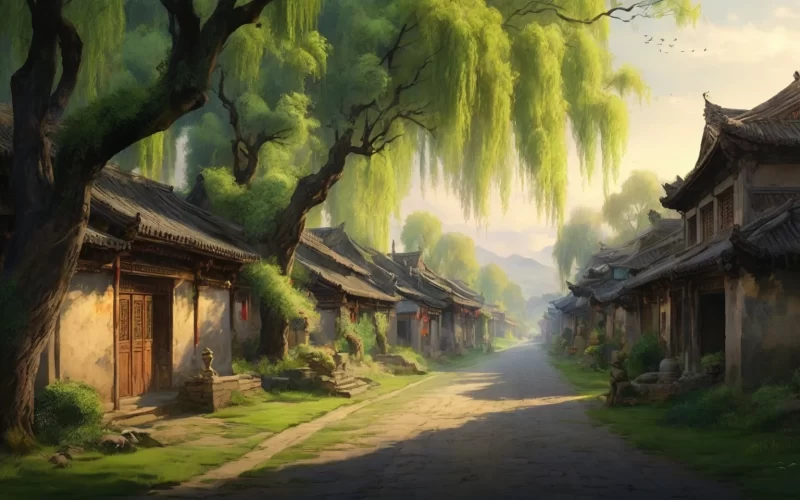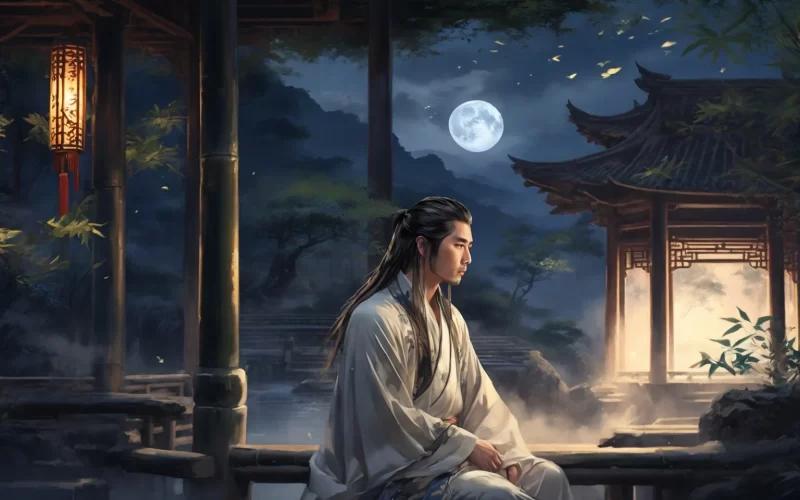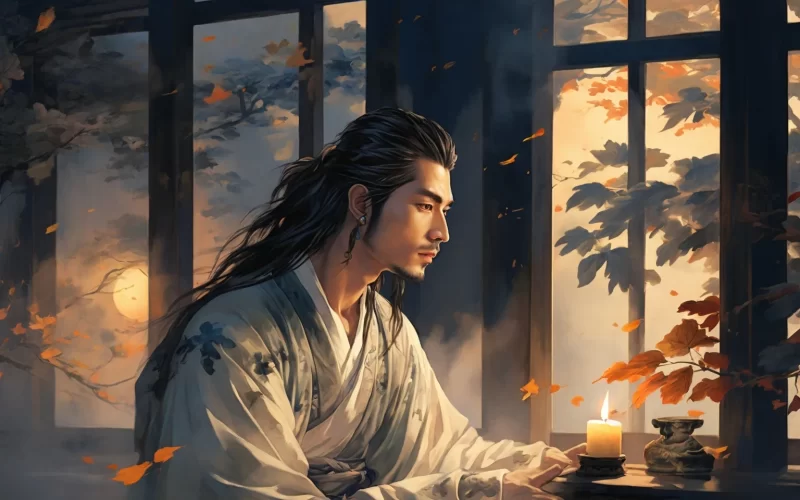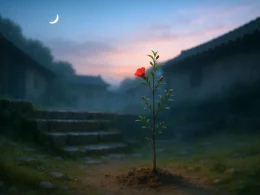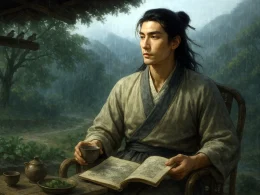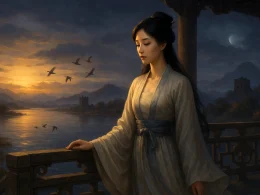Though a shower bends the river-grass, a bird is singing,
While ghosts of the Six Dynasties pass like a dream
Around the Forbidden City, under weeping willows
Which loom still for three miles along the misty moat.
Original Poem
「台城」
韦庄
江雨霏霏江草齐,六朝如梦鸟空啼。
无情最是台城柳,依旧烟笼十里堤。
Interpretation
This poem was composed in the late 9th century during the twilight years of the Tang Dynasty. As war raged across the Central Plains and the once-glorious capital Nanjing stood in ruins, Wei Zhuang—a poet weathered by exile—penned "Terrace City" amid the empire's collapse. Through spring scenery and historical remnants, he intertwines lyrical description, historical meditation, and personal lament, creating a profound reflection on impermanence.
First Couplet: "江雨霏霏江草齐,六朝如梦鸟空啼。"
Jiāng yǔ fēi fēi jiāng cǎo qí, liù cháo rú mèng niǎo kōng tí.
River rain drizzles on riverside grass so even,
Six dynasties dreamlike—a lone bird's empty weeping.
The misty spring scene ("drizzling rain," "even grass") belies historical melancholy. "Dreamlike Six Dynasties" contrasts past splendor with present desolation, while "empty weeping" (空啼) emphasizes the futility of lamenting vanished glory.
Second Couplet: "无情最是台城柳,依旧烟笼十里堤。"
Wú qíng zuì shì Tái chéng liǔ, yī jiù yān lǒng shí lǐ dī.
Most heartless—Terrace City's willows remain,
Still veiling ten-mile dikes in misty chain.
The willows—once symbols of dynastic opulence—now indifferent to human tragedy, embody history's cruel continuity. Their "still-lingering mist" (依旧烟笼) underscores nature's apathy toward human transience.
Holistic Appreciation
In just twenty Chinese characters, "A Nanjing Landscape" achieves remarkable grandeur of vision and depth of emotion. Wei Zhuang masterfully conveys feeling through scenery and history through objects, progressively building—through depictions of river rain, birds' cries, and embankment willows—a historical panorama where dreamlike illusion reveals truth, and quiet desolation carries profound lament. The poem combines meticulous portrayals of natural beauty with nostalgic reflections on the Six Dynasties' past, while also embodying the poet's hidden anguish and anxiety toward the turbulent times he inhabited. Key phrases like "like a dream" (如梦), "vain crying" (空啼), "heartless" (无情), and "still unchanged" (依旧) tightly reinforce the central theme, elevating to its climax the poetic realm where subject and object merge, past and present stand juxtaposed.
Artistic Features
- Emotion Embodied in Scenery, Blending Reality and Imagination
Though the poem never directly describes the ruins of Terrace City, it subtly evokes historical context through imagery of river rain, verdant grasses, birdsong, and embankment willows. This creates a profoundly suggestive lyrical mode that speaks through implication rather than declaration. - Juxtaposition of Past and Present, Fusion of Subject and Object
The phrase "Six Dynasties like a dream" (六朝如梦) carries nostalgic remembrance of past splendor, while the words "still unchanged" (依旧) reveal the poet's profound realization of history's indifference and life's transience. This temporal contrast merges the observer's perspective with the observed landscape. - Linguistic Precision with Semantic Depth
The poem achieves remarkable expressive power through its concise language. Each carefully chosen character - particularly "vain crying" (空啼), "most truly" (最是), and "still unchanged" (依旧) - resonates with emotional and philosophical significance, demonstrating the Tang poets' mastery of compressed meaning.
Insights
"A Nanjing Landscape" conveys profound historical consciousness and lament for dynastic transitions through just twenty characters, reminding us that prosperity fades and nothing remains constant. By contrasting nature's enduring elements ("still unchanged") with human impermanence ("vicissitudes"), the poet mourns lost glory while expressing deep concern for contemporary turmoil. This intense contemplation of history and reality inspires us to examine our relationship with changing times, facing life's fluctuations with enriched historical awareness. The poem's enduring value lies in its demonstration of how poetic art can transform personal melancholy into universal meditation on time's passage.
Poem translator:
Kiang Kanghu
About the Poet:
Wei Zhuang (韦庄), circa 836 - 910 A.D., a native of Xi'an in the southeast of Shaanxi Province, was a scholar and a minister of the Ministry of Revenue. There is a collection of “Raccoon Flower Collections” in circulation.






